As with most of the Roman posts this one is included a. because it’s fun, and b. because Uncle Henry – Mgr HH O’Bryen was there.
THE PAPAL JUBILEE.
(FROM OUR SPECIAL CORRESPONDENT.)
DEPARTURE OF THE BRITISH PILGRIMAGE.
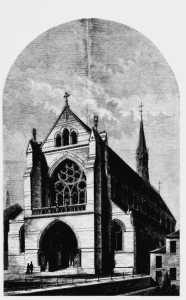 The Irish pilgrims to Rome had anticipated our day of departure. Therefore it is that I must take up the thread of our combined Roman chronicle after our own arrival in Rome. We met then, English and Scottish pilgrims, some five hundred strong, at the Pro-Cathedral, Kensington, on Monday night, February 13. The Archbishop of St. Andrews and Edinburgh delivered an address on the object of our journey, and the fitting spirit in which we should go, and Benediction concluded this opening ceremonial. On the following morning, at II a.m., we began our journey from Victoria, two special trains containing the pilgrims travelling in succession the one to the other. Of our crossing the Channel I need say no more than that we were compelled to endure considerable mortifications ; it was very rough, and the special boat was crowded to repletion ; nevertheless the pilgrim train arrived in Paris not more than two hours late. The Gare du Nord, immediately after our arrival, was thrown into unexampled confusion. Nobody was able to find, much less identify, his luggage, and the French officials were perfectly apathetic to our distressful condition. After much struggling, however, and perspiring exertion, we reached our several destinations in Paris safely.
The Irish pilgrims to Rome had anticipated our day of departure. Therefore it is that I must take up the thread of our combined Roman chronicle after our own arrival in Rome. We met then, English and Scottish pilgrims, some five hundred strong, at the Pro-Cathedral, Kensington, on Monday night, February 13. The Archbishop of St. Andrews and Edinburgh delivered an address on the object of our journey, and the fitting spirit in which we should go, and Benediction concluded this opening ceremonial. On the following morning, at II a.m., we began our journey from Victoria, two special trains containing the pilgrims travelling in succession the one to the other. Of our crossing the Channel I need say no more than that we were compelled to endure considerable mortifications ; it was very rough, and the special boat was crowded to repletion ; nevertheless the pilgrim train arrived in Paris not more than two hours late. The Gare du Nord, immediately after our arrival, was thrown into unexampled confusion. Nobody was able to find, much less identify, his luggage, and the French officials were perfectly apathetic to our distressful condition. After much struggling, however, and perspiring exertion, we reached our several destinations in Paris safely.
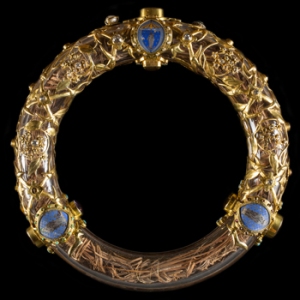 On the following morning we assembled in strong force at Notre Dame, where, after Mass and the distribution of ashes, the great relic preserved in the Cathedral (the Crown of Thorns of Our Lord) was, by special favour, offered for the veneration of the pilgrims. The reliquary is in the form of a cross, about two feet long, and a circular case in the centre contains the precious relic.
On the following morning we assembled in strong force at Notre Dame, where, after Mass and the distribution of ashes, the great relic preserved in the Cathedral (the Crown of Thorns of Our Lord) was, by special favour, offered for the veneration of the pilgrims. The reliquary is in the form of a cross, about two feet long, and a circular case in the centre contains the precious relic.
At 11.45 we left Paris, and dinner was served at Dijon. Here in truth we learned a sorrowful necessity of patience. There was a rapid raid made on the Buffet, which, in effect, nearly developed in a free fight. By the vigilance of the Committee, however, all disastrous effects were avoided ; we consumed a certain quantity of food, and were quickly back in our train making preparation for the night journey. This was accomplished without mishap, and the morning sun rose as we travelled down—down—from the bleak hills into the most gracious levels of Italy. We went with the sweep of a wind from this bleakness into this hospitality ; and enjoyment was once more a visitor to our souls when we reached Modane, and were compelled to endure another scene of turmoil by reason of the enforced examination of our lesser baggage. Steadily keeping unpunctual by the two hours to the bad which had marked our arrival at Paris, we reached Genoa at half-past five, and left the train to take some rest within sight of the curving Mediterranean, and the lean sloping hills of Italy. Rain greeted us in the morning, and it was in a deluge that we left Genoa at halfpast eight ; but the weather quickly cleared up, and, by the time we had arrived at Pisa, with its extremely modern looking station, the sun was shining.
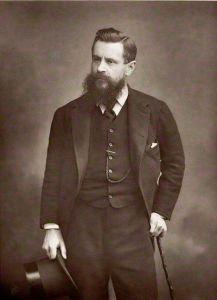
Some of us took the opportunity of an hour’s delay at this town to take a hasty glance at the famous leaning tower, but the effect of this curiosity was to retard still more the heavily laden train, which arrived at half-past eleven, three hours after the appointed time. I may add in passing that, owing to the lateness of the hour, no luggage could be obtained that night. We were met by quite a crowd of the English colony, and by a deputation of the Circolo di San Pietro accompanied by the Vice-President of the General Pilgrimage Committee in Italy ; while the Rector of the Scots College and many of the students, with their purple cassocks and black ferraiouli, were present to welcome the Scottish pilgrims. On the arrival of the train, a deputation was presented to the Duke of Norfolk, who returned formal thanks for the attention.
THE IRISH PILGRIMS.

Meanwhile it is now necessary for me to return to the Irish Pilgrims who arrived on the Tuesday, and to chronicle their doings, as I have them by hearsay, down to our own arrival in the Eternal City. The Irish pilgrims, then, arrived on Tuesday night, and were met at the station by the Rector of the Irish College and by a deputation of the Circolo di San Pietro. On the following morning they all assembled in the chapel of the Irish College to assist at the Mass celebrated by Cardinal Logue, who also distributed the ashes to them, the, pilgrims singing together several parts of the Mass. At the end of it they sang the hymn, “God bless the Pope,” and then “Faith of Our Fathers.” Dr. Kelly, the Rector, while his Eminence was unrobing after Mass, delivered a little discourse, describing the chapel and its antiquarian interest. He also drew the attention of the pilgrims to the beautiful monument erected there to the memory of O’Connell, which encloses his heart. He recalled O’Connell’s words on his death-bed, when he said that he gave his soul to heaven, his body to Ireland, and his heart to Rome.
The pilgrims then assisted at the unveiling of a commemorative slab to the memory of Cardinal Cullen. The slab is on the wall of the first landing of the big staircase leading inside the College. The Cardinal, surrounded by pilgrims, had just taken his seat opposite the slab, and the ceremony was about to begin, when the venerable figure of Archbishop Kirby, the late Rector, who for many years had held that post, appeared through the crowd of pilgrims. He is indeed just recovering from rather a bad illness ; yet in spite of his being ninety years of age he determined to make the exertion of appearing amongst the pilgrims and welcoming them to Rome. The pilgrims received him with hearty cheers. The Rev. P. Maguire recited an ode in the Irish language, dedicated to the Cardinal, who in reply delivered a few pleased and appreciative words. On the Thursday morning, the day before our arrival, the Irish pilgrims assisted at Mass in the Church of San Clemente, after which Father Hickey, Prior of the Irish Dominicans, showed the pilgrims over the celebrated underground Church of San Clemente, which, being the first basilica dedicated to this saint, was discovered and excavated in 1857 by the late Father Mullooley.
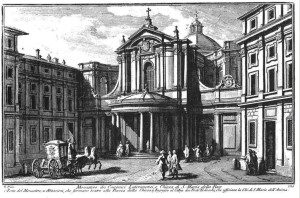 On the same afternoon Cardinal Logue took possession of his titular Church of Santa Maria della Pace. The pilgrims were all assembled in the church by four o’clock. At a quarter after the hour, his Eminence entered the church, accompanied by the procession, and took his seat on the throne erected in the sanctuary on the gospel side of the altar. The different Bishops that have come with the pilgrims were seated in reserved seats immediately before the sanctuary. There were also present several Italian Bishops, and the Rectors and Priors of the different Irish communities in Rome. The Cardinal was assisted by the Rector of the Irish College and by Mgr. O’Bryen, while Mgr. Cocci acted as master of ceremonies. Mgr. Pericoli, the Apostolic Notary, read the Pontifical Bull conferring the church, and the Rector of the church, after the reading of the Bull, delivered a speech congratulating the Cardinal on the occasion. The Cardinal returned thanks, and stepping from the throne, addressed the pilgrims from the sanctuary rails, giving, in fact, an interesting account of the Church assigned to him by the Pope. A Te Deum closed the ceremony, and the same evening the Cardinal gave a reception of the pilgrims in the Halls of the Arcadia. Cardinal Vaughan, Cardinal Macchi, Archbishop Stonor, the Bishops of Clifton and Emmaus, the Austrian Ambassador, and many distinguished personages were present. The reception was, I am assured, a brilliant success.
On the same afternoon Cardinal Logue took possession of his titular Church of Santa Maria della Pace. The pilgrims were all assembled in the church by four o’clock. At a quarter after the hour, his Eminence entered the church, accompanied by the procession, and took his seat on the throne erected in the sanctuary on the gospel side of the altar. The different Bishops that have come with the pilgrims were seated in reserved seats immediately before the sanctuary. There were also present several Italian Bishops, and the Rectors and Priors of the different Irish communities in Rome. The Cardinal was assisted by the Rector of the Irish College and by Mgr. O’Bryen, while Mgr. Cocci acted as master of ceremonies. Mgr. Pericoli, the Apostolic Notary, read the Pontifical Bull conferring the church, and the Rector of the church, after the reading of the Bull, delivered a speech congratulating the Cardinal on the occasion. The Cardinal returned thanks, and stepping from the throne, addressed the pilgrims from the sanctuary rails, giving, in fact, an interesting account of the Church assigned to him by the Pope. A Te Deum closed the ceremony, and the same evening the Cardinal gave a reception of the pilgrims in the Halls of the Arcadia. Cardinal Vaughan, Cardinal Macchi, Archbishop Stonor, the Bishops of Clifton and Emmaus, the Austrian Ambassador, and many distinguished personages were present. The reception was, I am assured, a brilliant success.
IN ROME.
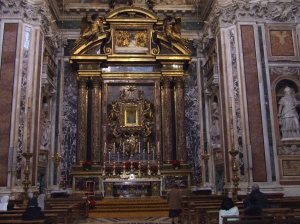
I return now to our own fortunes. We all assembled on Saturday morning in the Borghese Chapel of Santa Maria Maggiore, having wended our way to the great church from all the points of the compass. My own way led me, with several others, past the Palazzo Barberini, and the Quattro Fontane, by the Via Nazionale. Climbing the great exterior steps, then, and entering the church, we met, as I have said, in the Borghese Chapel. The altar was for the time, occupied by a Neapolitan Bishop ; but after he had finished Mass, the Bishop of Clifton began to vest, and Mass began shortly after ten o’clock. The picture of the famous Madonna, said to have been painted by St. Luke, was exposed to view, and kneeling in front of the sanctuary was our Cardinal, in purple, with scarlet zucchetto.
During the Mass the Litany of Loretto and “Hail Queen of Heaven” were sung, and I cannot easily describe the devotional effect of those five hundred English voices uplifted and echoing among these springing Italian arches, and amid this gay and florid decoration. I think that even Mr. Francis Whitgreave, Jun., might have been persuaded, for the moment, into the tolerance of this noble and most unsinning architecture, and for the moment have overlooked the immoral sins of commission which have been heaped upon these poor stones. At the end of Mass Cardinal Vaughan delivered a short discourse upon the relics which this Church contains, and afterwards accompanied the pilgrims upon a visit to the crypt.
When this ceremony was concluded, we all repaired to the Hotel de Rome, the head-quarters of the Pilgrimage, to receive our tickets for the great function on the following day. We received injunctions to be at St. Peter’s, if possible, by five o’clock on the following morning, on account of the crush that was expected. Personally, having some little knowledge of the ways of Roman functions, I suspected my ticket ; and, observing that it had no encouragement endorsed upon it for any entrance to a tribune, only serving (as I supposed) for the body of the Church, I made subsequent effort to exchange it for a tribune ticket. This, by a stroke of good fortune, I was enabled to effect.
BEFORE THE FUNCTION.
I am told that pilgrims began to gather round the Facciata of the great Cathedral as early as three o’clock in the morning, and that cafes and restaurants were up betimes with their fires lit in busy provision of breakfasts. I started with my tribune ticket for the Apse at half-past six, and having resolved to avoid crossing the Tiber by the temporary iron bridge near St. Angelo, which the Romans in satire call the Gabbthne (huge cage), over which the new tram lines run, I drove a long but clear round across the new Ponte Margherita and through the Prati di Castello quarter, and so effected an entrance into the Piazza of St. Peter’s at the Colonnade of Constantine. 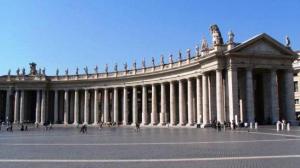
Here lines of Italian soldiers were drawn across the middle of the vast space, and further progress was only granted to those who were in the possession of tickets, whether for the tribunes near the high altar, or for standing room in the nave The doors had been opened at 6.30, and I learn that much disappointment was expressed by many of the Irish and English pilgrims on the discovery, for the first time, that no special places had been reserved in the Basilica for them. “It caused,” writes one, whose letter I have permission to quote, “a certain amount of dissatisfaction amongst the pilgrims who, having undergone all the fatigues of the long journey for the special purpose of attending this Mass, considered themselves entitled to rather more consideration than they received on this occasion. Nevertheless we resigned ourselves to standing in the seething crowd for some three hours, a resignation which the splendid function that followed amply justified.”
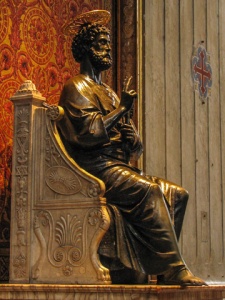 The Irish pilgrims, I should here remark, marched into the Basilica four abreast, displaying great spirit, bearing a banner aloft, and carrying all before them. Father Ring acted as Captain of the Irish forces. Most of these were stationed near the statue of St. Peter, which had been arranged for the Jubilee in the pontifical robes, and wore a tiara and ring—a ritual usually restricted to the Feast of St. Peter in June. The pilasters of the great nave and the dome were draped, as usual, with rich crimson brocade, bordered with gold lace, not tinsel or fine copper wire, as some contemptuously suppose, but real gold-woven work. By seven o’clock the tribunes in the apse were filled with various ladies and gentlemen, together with many religious, priests, and sisters—the English Nuns, founded by Lady Georgiana Fullerton (the Servants of the Mother of God), and the Nottingham Sisters (the Little Company of Mary), with their blue lined veils, the ladies of the Sacre Coeur, and others.
The Irish pilgrims, I should here remark, marched into the Basilica four abreast, displaying great spirit, bearing a banner aloft, and carrying all before them. Father Ring acted as Captain of the Irish forces. Most of these were stationed near the statue of St. Peter, which had been arranged for the Jubilee in the pontifical robes, and wore a tiara and ring—a ritual usually restricted to the Feast of St. Peter in June. The pilasters of the great nave and the dome were draped, as usual, with rich crimson brocade, bordered with gold lace, not tinsel or fine copper wire, as some contemptuously suppose, but real gold-woven work. By seven o’clock the tribunes in the apse were filled with various ladies and gentlemen, together with many religious, priests, and sisters—the English Nuns, founded by Lady Georgiana Fullerton (the Servants of the Mother of God), and the Nottingham Sisters (the Little Company of Mary), with their blue lined veils, the ladies of the Sacre Coeur, and others.

The High Altar was illuminated with many tall wax lights and immense bouquets of natural flowers were massed between the Altar and the “Confession.” In the long three hours before the function began—appointed for nine, it was delayed till a quarter to ten—the tribunes gradually filled chiefly with members of the Roman aristocracy and of the Diplomatic Corps. Some of the uniforms were gorgeous, and some curiosity was aroused by the appearance of three German Catholic students arrayed in black velvet braided jackets, white leather breeches, and long boots ; they carried large black velvet caps with white feathers, and silk scarves of the Papal and German colours, white and yellow, black and white intermingled. Down the great Church the view was most impressive. The heads of the crowd were packed together from altar to great door, and it is calculated that from sixty to eighty thousand people were gathered in the building. The black lace veils worn by the women set against the black and white of the men’s evening dress contrasted with the gay red and yellow of the Swiss guards, with their halberds and baggy knickerbockers, and again with the white and blue of the Guardia Nobile. Two men, I have been credibly informed, overcome by the crush had to be lifted insensible over the palisade in the centre of the nave and carried to one of the five ambulances prepared in various parts of the Church for emergencies of the kind. From where I sat, in one of the Apse tribunes, the 150 choristers perched aloft in the Dome seemed like black and white dolls moving about in the vague spaces of the giant cupola.
THE RECEPTION OF THE POPE.
At last, after long waiting, a thrill of emotion swept through the dense crowds, for the Pope had descended from his apartments, and knelt at prayer in the Chapel of the Holy Sacrament ; he was not yet to be seen, for the right nave was screened by heavy crimson damask curtains down to the Chapel of the Pieta, where all the Canons of St. Peter’s, with the Cardinal Archpriest Ricci Paracciani,, received his Holiness. Here he was robed in the white and gold chasuble presented by the Roman ladies for his Sacerdotal Jubilee, and the precious mitre offered on the present occasion by his Noble Guards. The Holy Father wore also the great white fala’a, reserved exclusively for the Sovereign Pontiff, clasped with jewels, and the train held by the two Monsignori, who are his camerieri partecipanti.
 The tiara was placed on his head, and when the Pontiff was seated in the sedia gestatoria, the procession up the great nave slowly began ; and the silver trumpets sounded from the Loggia of the Beatifications above the great central door of St. Peter’s. The Pontifical choir led the way, singing Tu es Petrus, but their voices had scarcely broken into the air when a great burst of cheering went up from the immense concourse of people. It was like the roar of the sea breaking on a strand. The enthusiasm was unbounded, and deafening cries of “Viva il Papa Re,” “Viva il Vicario di Cristo,” arose as the seated figure of the Pontiff, leaning gently from side to side in benediction of his flock, was borne up the nave. The progress to the High Altar, the enthusiasm ever growing greater and greater, till at length that vast congregation seemed almost beside itself with emotion.
The tiara was placed on his head, and when the Pontiff was seated in the sedia gestatoria, the procession up the great nave slowly began ; and the silver trumpets sounded from the Loggia of the Beatifications above the great central door of St. Peter’s. The Pontifical choir led the way, singing Tu es Petrus, but their voices had scarcely broken into the air when a great burst of cheering went up from the immense concourse of people. It was like the roar of the sea breaking on a strand. The enthusiasm was unbounded, and deafening cries of “Viva il Papa Re,” “Viva il Vicario di Cristo,” arose as the seated figure of the Pontiff, leaning gently from side to side in benediction of his flock, was borne up the nave. The progress to the High Altar, the enthusiasm ever growing greater and greater, till at length that vast congregation seemed almost beside itself with emotion.
THE POPE’S MASS.
Calm was only restored when Leo XIII. stood before the altar of the Confession to begin the Holy Sacrifice. He said a Low Mass, and was assisted by the two Archbishops of the Chapter of St. Peter’s, Monsignori Tamminiatelli and Cassetta, his Auditor, Mgr. Fausti, and the Sacristan, Mgr. Pifferi. During Mass the choir of the Sixtine Chapel, led by their old Maestro, Mustafa, sang the Jubilate Deo. Every eye was fixed upon the venerable white old man absorbed in prayer, who celebrated with the same touching reverence and humility as if in his own private chapel. There was a solemn hush through the whole multitude, and many were moved to tears at the moment of the elevation, when the cool liquid strains of the silver trumpets streamed through the building, and the choir chanted the chorus by Mustafa, Domine Salvum fac, re-echoed by the fresh young voices in the cupola.
Mass being ended, the Holy Father recited the usual prayers and thanksgiving; then for a few minutes he retired to a pavilion under the choir to partake of some slight refreshment, having, of course, fasted from the preceding evening. Meantime, the choir sang the prayer of the Holy Father, Sancte Michael, &c., to music composed by Mustafa. Then his Holiness returned to the foot of the altar, and the Pontifical robes, including the tiara, being again put on, the Te Deum was intoned and taken up by the choirs, and the responses joined in by thousands of voices in every part of the church. Although the Holy Father did not himself intone the great hymn, he joined with all the people in the responses, greatly to the distress of his attendants, who trembled lest the fatigue should overcome him. In fact, the great emotion did overcome His Holiness and he became quite faint for a few moments. But quickly rallying his strength Leo XIII. was again borne in the sedia gestatoria, in the same order of procession as before round the altar to the front of the Confession. Here His Holiness gave the Papal Benediction, standing up and reading it from the Pontificale Romanum held before him. The prayers and Indulgences are as follows : Sancti Apostoli Petrus et Paulus de quorum potestate et auctoritate confidimus, ipsi intercedant pro nobis ad Dominum. Precibus et meritis beatae Mariae semper Virginis, beati Michaelis Archangeli, beati Joannis Baptistae, et sanctorum Apostolorum Petri et Pauli, et omnium Sanctorum, misereatur vestri omnipotens Deus, et dimissis omnibus peccatis vestris, perducat vos Jesus Christus ad vitam aetemam. Amen. Indulgentiam, absolutionem, et remissionem omnium peccatorum vestrorum, spatium verae et fructuosae poenitentiae, cor semper poenitens et emendationem vitae, gratiam et consolationem Sancti Spiritus, et finalem perseverantiam in bonis operibus, tribuat vobis omnipotens et misericors Dominus. Amen.
These prayers being read, the Sovereign Pontiff blessed all the people, making three times the sign of the Cross, and saying : ” Benedictio Dei omnipotent’s, Patris, et Filii, et Spiritus Sancti descendat super vos, et maneat semper.” Then three solemn “Amens” were uttered, and Cardinals Mazzella and Verga promulgated the Plenary Indulgence attached to this solemn Papal Benediction. Another indescribable ovation greeted the Holy Father as he was carried down the centre of the nave and returned to the Chapel of the Pieta.
THE SEQUEL.
It was a considerable time before this great multitude could emerge from St. Peter’s. The exit seemed more difficult than the entrance, and standing on the steps, looking out through the pillars of the Great Colonnade, the whole Piazza appeared black with human beings, who, however, dispersed in the most orderly manner. Nothing, in a word, occurred to mar the splendour of that function, which was probably one of the finest of its kind ever seen.
Benediction was given in the afternoon by Cardinal Vaughan at the English Convent in the Via San Sebastianino, and his Eminence held a reception there afterwards. In the evening the city was illuminated. I must, in closing my letter, add that on Tuesday the Pope received the Irish pilgrims, headed by Cardinal Logue, in the Grand Hall of the Consistory. On this occasion Cardinal Logue read an address in which the pilgrims congratulated the Pope, and expressed their devotion to the Holy See.
Another address was read by the Bishop of Galway, thanking the Pope for having so honoured Ireland in raising its Primate to the rank of Cardinal, and expressing the devotion of the Irish people to the Supreme Pontiff. The address stated that during Jubilee week prayers were being said in Ireland for the Pope, and that more than 2,000 priests were saying Mass for him. The Pope, who, I am told, seemed exceedingly pleased during the reading of the speech, replied in Latin, and, having said a few words, said that he was suffering from a sore throat, which prevented him from speaking at any length. His Holiness then charged Mgr. Bisleti to continue the reading of the reply, which, like the address from the Irish Catholics, was of an essentially religious character.
The Pope, after expressing his satisfaction over seeing before him the faithful sons of St. Patrick, thanked the pilgrims for having organized in Ireland an Association comprising a million Catholics, who, being unable to come to Rome, combined themselves from afar with the pilgrimage by daily attendance at special Masses for the Sovereign Pontiff. His Holiness went on to refer to the traditional faith and piety of the Irish Catholics, whose devotion to the Holy See had always been the same in good and evil days. In conclusion, the Pope exhorted the pilgrims to persevere in their attachment to the Chair of St. Peter, and not to forget the saying of St. Patrick — Sicut Christiani ita et Romani sills. His Holiness then gave his hand to each person present to kiss the “Fisher’s Ring,” and dismissed the pilgrims after pronouncing the Benediction upon all Catholics, both present and absent.
I have to add that in the evening the Duke of Norfolk held a brilliant reception of pilgrims, both British and Irish, at the Hotel de Rome. The Duke of Norfolk wore the Grand Cross of the Order of Christ, and was assisted in the reception of his guests by his sisters, Lady Mary and Lady Margaret Howard. Amongst those present were the Earl of Gainsborough, and no fewer than fifteen Archbishops and Bishops, including the Archbishop of Edinburgh, the Archbishop of Trebizond, and the Bishops of Nottingham, Clifton, Southwark, Birmingham, and Aberdeen. The reception lasted from 9 o’clock until late. Of the Cardinal’s taking possession of his titular church you will receive an independent account.
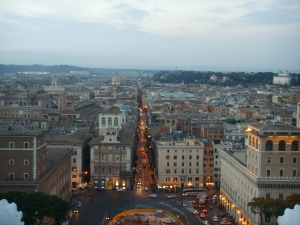
Meanwhile, it only remains to add that we are doing very well here, and know how to take care of ourselves. Last night I walked down the Corso, from the Piazza del Popolo to the Piazza Colonna, upon which shines the white glare of those Roman Whiteleys, Fratelli Bocconi. The street was indeed Italian, the sky with its stars and moon was Italian ; the skyline of the houses was Italian, despite all the changes which have in these past years sacrificed the picturesque in Italy. But the prevalent voice was the voice of England and Ireland. Above the din of the newsboys rushing out into the streets from the newspaper offices, calling with their inimitable emphasis upon the penultimate syllable—Fanfiella Opinione Din/to /—you heard the murmur of an English accent, or an Irish brogue.
Among the benches of the Caffe Greco Englishmen supped black coffee ; there were English greetings here and there, and little groups of Italians would gather silently to observe English meetings and laughter, and to listen without understanding to our pure native criticism. We lounged at our ease, and we too watched these Italian groups, some gay with the blue-gray cloaks of Italian officers, or strange by reason of an alien costume ; or a group of Bersaglieri would post past us as if their hearts were bursting for the enforced rapidity of their motion. Yet we felt perfectly at home ; for, as I have said, everywhere you heard the echo of English speech or recognized English faces. And our universal feeling was that we had all been singularly privileged to assist at a demonstration so imposing, so impressive and so devotional as that which took place on Sunday at St. Peter’s.
The above text was found on p.8, 25th February 1893 in “The Tablet: The International Catholic News Weekly.” Reproduced with kind permission of the Publisher. The Tablet can be found at http://www.thetablet.co.uk .